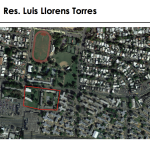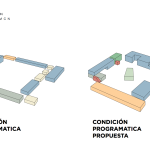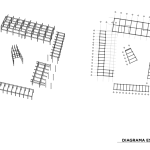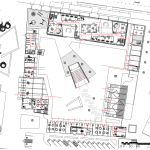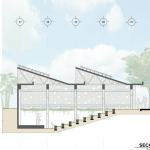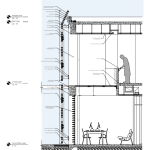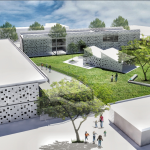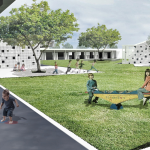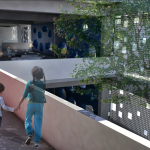El Aula Constructivista:
El espacio educativo como registro de la filosofía Reggio Emilia
“Education is when the mind expands, not when it memorizes. Education is not learning facts, it’s rather the training of the mind to think”. – Albert Einstein
Designer: Michael Bailey Cuesta
Thesis Director & Committee: Darwin Marrero, Mayra Jimenez & Emilio Martínez
Thesis Date: 12/Mayo/2015
TOS[er]: Kish I. Báez
TOS Post: April 2016
El ambiente de aprendizaje posee cuatro dimensiones: física, funcional, temporal y relacional. Está comprobado que la dimensión física afecta directamente el ánimo del estudiante y por ende el proceso de enseñanza y aprendizaje. Es aquí donde Michael Bailey realiza una investigación a nivel elemental y propone transformar el espacio educativo y su ambiente de aprendizaje para mejorar la relación entre el maestro y el estudiante. Toma como punto de partida la filosofía Reggio Emilia que dicta un sistema dinámico dirigido a las diferentes estrategias que se pueden emplear para educar a un niño con énfasis en que cada persona construye conocimiento a través de las experiencias personales. Se propone el diseño de una serie de espacios de aprendizaje que estimulan la curiosidad del niño por medio de cambios de luz en quiébrasoles, patios verdes y paredes perforadas invitándolo así al descubrimiento; aprendizaje. En el diseño propuesto, el maestro pasa de ser una figura de autoridad vertical y se convierte en un creador de ambientes que estimula la curiosidad, invitan al cuestionamiento e impulsan experiencias sensoriales creando así una experiencia de aprendizaje efectivo. La mente de un niño es como una esponja, lo que absorbe aprende y lo que aprende proyecta . ¿Quieres cambiar el mundo? Empieza con tu niño.
The learning atmosphere possesses four dimensions: physical, functional, temporal and rational. It’s been proven that the physical dimension has a direct effect on a student’s mood and the teaching-learning process. Michael Bailey researches the phenomenology of learning spaces on an elementary level and proposes the transformation of the educational space and it’s atmosphere to improve and enhance the teacher-student experience. His proposal is to rescue deteriorated public spaces is inspired by the Reggio Emilia doctrine and his proposal of a dynamic system to ensure every kid can be educated by building knowledge based on personal experiences. The design of sequential spaces offers curiosity to their surroundings, constantly learning trough green spaces, skylights and moving walls. In the proposed design, the teacher ceases to be an authority figure to become the atmosphere creator that the kids need. A child’s mind is like a sponge, what it absorbs is learned and what learned is projected. Want to change the world? Start with your kid.

